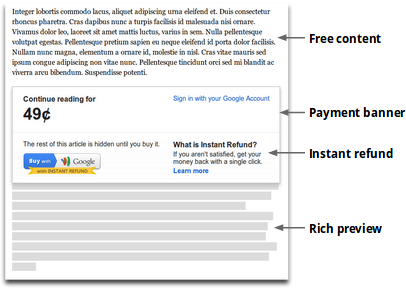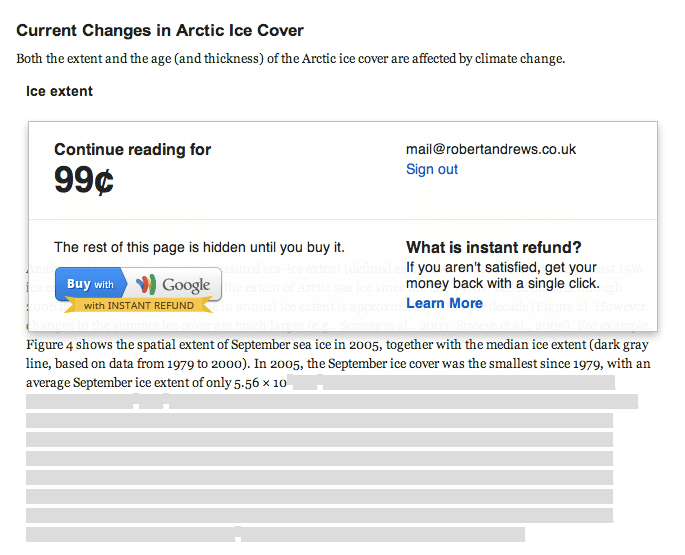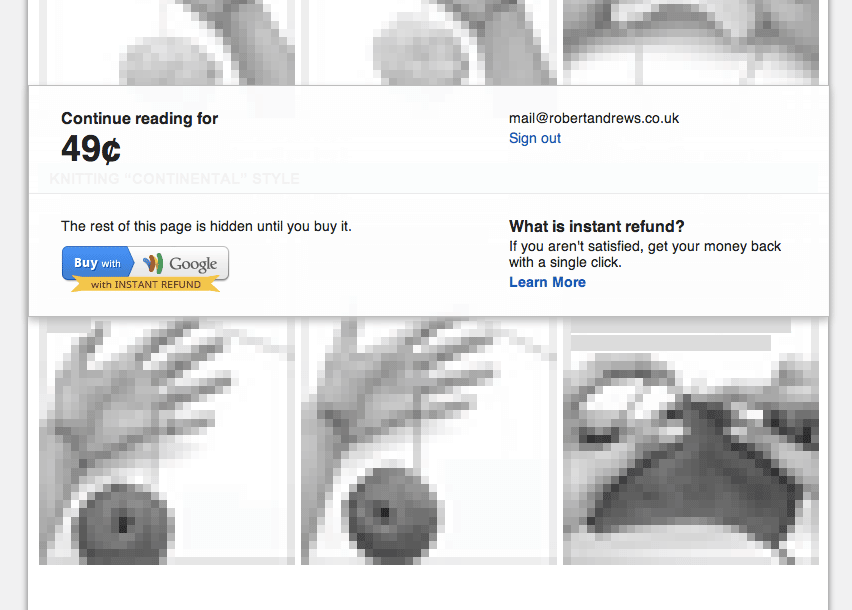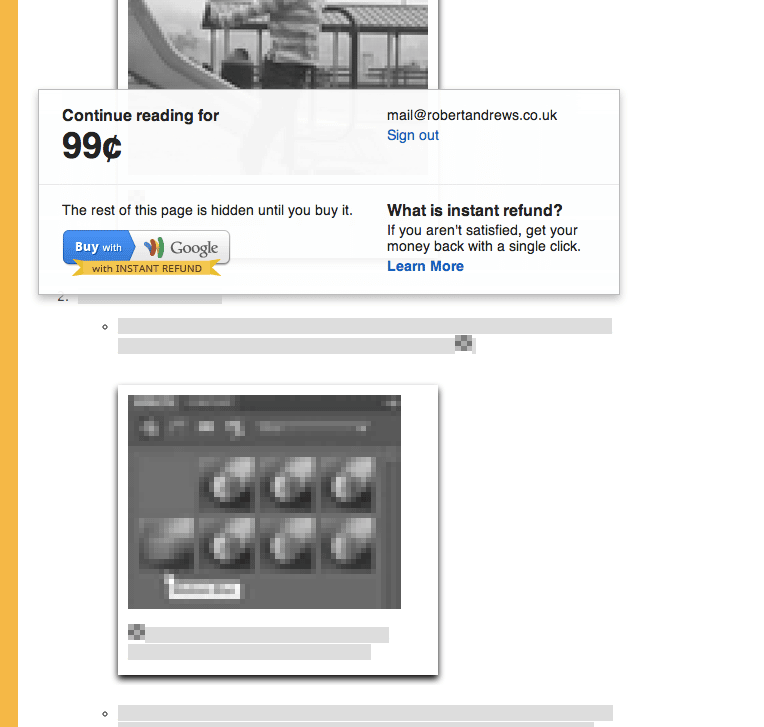
After retiring its experimental OnePass news payments system this spring, Google is now going ahead with a fuller version of its content micropayments platform under the Google Wallet moniker.
In an overnight blog post, which was briefly published and removed, Google Wallet product manager Pali Bhat and engineer Rob Ennals said Google Wallet will support content payments typically ranging between $0.25 and $0.99, with content obfuscated after an opening preview and a 30-minute “instant refund” for unhappy users.
Already publicised elsewhere on Google, a site showcases debut uses currently live by Oxford Reference, Dorling Kindersley and Pearson’s PeachPit.
This development marks the arrival of a big beast in to a micropayments facilitation space populated by several smaller vendors like ZnakIt, but also bigger providers like PayPal, whose own digital content platform has been gathering pace.
Google’s system works like similar rivals, for example, Cleeng, redacting article text in what Google is calling a “rich preview” and “rich obfuscated content”. In the same way, images that must be paid for can also be pixelated.
Payment must be made before readers can see the whole article. The Google Wallet overlay enables swift (dare I say “frictionless”?) payment for users who already have a card registered in their Google Wallet account. It’s all rather quick.
Will any of it work, however?
In its blog post, which also lauds its advertising tools for monetising free content, Google acknowledged:
“Users love free content, and so we expect that advertising will remain the most effective monetization model for most content on the web. However, we know that there is more great content that creators could bring to the web if they had an effective way to sell individual articles that users can find with search.”
Google tells publishers the Wallet content is: “Compatible with ads. By running ads alongside the preview content, you can get an ad impression even if a user doesn’t buy the content.”
Since consumers are buying content here, Google is providing perpetual archive access so that consumers can access the same material in future.
It is notable that material from Google Wallet’s first content clients is instructional (PeachPit’s Photoshop tutorial, Dorling Kindersley’s knitting guide) and informational (Oxford Reference’s arctic sea-ice article) – all relatively timeless.
So far, there is no out-and-out news content amongst the flagships. Google is inviting more expressions of interest from US publishers.
Google has been making good advances with Google Wallet for digital goods this year, introducing in-app payments and recurring subscriptions, plus payments for games.



